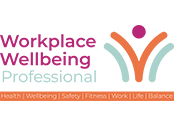Last month marks five years since the first COVID-19 lockdown, a pivotal moment that not only shook the world but also accelerated a transformation in how we work. What began as a sudden shift to remote work quickly turned into a long-term reimagining of workplace environments.
The pandemic didn’t create hybrid working – it accelerated a conversation that was already underway. Even before COVID-19, companies were exploring flexible models, but the crisis forced businesses to adapt quickly or risk being left behind.
Remote work gave employees a rare opportunity to reflect on their priorities and redefine what work-life balance meant to them. For many, it wasn’t just about location; it was about reclaiming autonomy, reassessing their values and stepping away from the constraints of outdated frameworks.
Now, five years on, the dust has settled. The workplace continues to evolve, but the question remains: what has stood the test of time, what’s made a comeback and what has been left behind for good?
Kept: A Focus on Employee Experience
The shift to remote and hybrid work has shown that flexibility is no longer a perk – it’s an expectation. Employees today want more than just a salary; they want to feel valued as whole individuals, not just workers. A 2023 Gartner report found that 82% of employees now expect their organisation to recognise them beyond their job role.
Many companies that prioritised employee wellbeing – through mental health support, flexible work policies and holistic wellness programmes – reaped significant benefits. Greater flexibility empowered employees to take charge of their work-life balance, reassess their priorities and make changes to better align with their personal needs.
However, the shift to remote work also introduced new challenges, particularly around engagement. Many remote workers struggled with feelings of isolation and a disconnect from company culture, reminding us of the vital importance of human connection in the workplace. As Drucker said, ‘Culture eats strategy for breakfast.’ That disconnection from central culture has affected some of us in ways we haven’t fully yet realised.
To combat this, organisations implemented virtual team-building activities, regular check-ins and enhanced communication tools to maintain a sense of connection and belonging. Some introduced flexible working hours to accommodate different lifestyles, while others made a conscious effort to prioritise mental health support and wellbeing initiatives. These efforts helped foster a more engaged and connected workforce, even in a remote environment. HR played a crucial role in providing guidance, support and stability for both businesses and their employees.
Looking ahead, the organisations that will thrive are those that move beyond surface-level perks. Open communication, meaningful recognition and a deep commitment to employee wellbeing will be the differentiators in attracting and retaining top talent.
Brought Back: Face-to-Face Collaboration – With Purpose
As offices reopened, companies found themselves navigating a divide: some employees craved in-person connection, while others preferred the autonomy of remote work. Research shows that 83% of employees say they are productive when working remotely, but 50% miss the social connection of an office.
Progressive companies have recognised that simply mandating office attendance for the sake of visibility is ineffective. Instead, they are redesigning in-person work to be purposeful–focusing on collaboration, creativity and culture-building. Offices are now being used for intentional activities like team workshops, brainstorming sessions and mentorship programmes, ensuring that employees get real value from coming in.
Research indicates that implementing purposeful in-person activities enhances employee engagement and reduces turnover intentions. A study during the COVID-19 pandemic found that employees who experienced meaningful work had a significantly lower intention to leave their jobs, especially when their work hours remained unaffected. Additionally, Gallup’s 2023 report highlighted that engaged employees are more committed and less likely to seek other opportunities.
This shift has also helped bridge the gap between different work styles. Client-facing roles, such as sales, often thrive in dynamic, face-to-face environments, while functions like tech and engineering continue to favour remote work. By allowing teams to come together when it truly matters, businesses are striking a balance that maximises productivity without forcing a rigid, one-size-fits-all approach.
Banished: Performative Perks
The pandemic made it clear that employees don’t stay for beer fridges and ping-pong tables. Before COVID-19, office perks were often used to cover up deeper workplace issues, but today’s workforce values more than just superficial benefits. Perks have their place–they’re a nice cherry on top, but if they are the cake, people feel cheated.
Rather than investing solely in gimmicks, businesses are refocusing on initiatives that truly enhance the employee experience. Opportunities for professional development, career growth and greater autonomy all underpinned by great leadership are key to attracting and retaining top talent in this new era of work.
According to a report by Gallup, 54% of workers say they would consider changing jobs for better work-life balance. Additionally, the State of Remote Work report by Buffer found that 32% of employees consider flexible schedules to be the most important benefit when choosing a job, followed closely by the ability to work remotely (24%).
Five years on from the global upheaval that reshaped the world of work, it’s clear that the workplace has changed for good. Companies that cling to outdated practices will struggle, while those that continue to evolve – guided by purpose, empathy and a genuine commitment to their people – will lead the way.
The future of work isn’t about being remote or in-office. It’s about being intentional, inclusive, and adaptable. And above all, it’s about putting people first.

An ENFP, Laura is a creative, people-first leader who thrives on big-picture thinking and fostering connections. Her career has been anything but linear - she's always sought work that's interesting, challenging and dynamic, finding her stride designing the people experience from the ground up at a startup scale-up.
That's what led her to Exclaimer. If her career were a fairy tale, Exclaimer would be her glass slipper - hard work, but a perfect fit.


